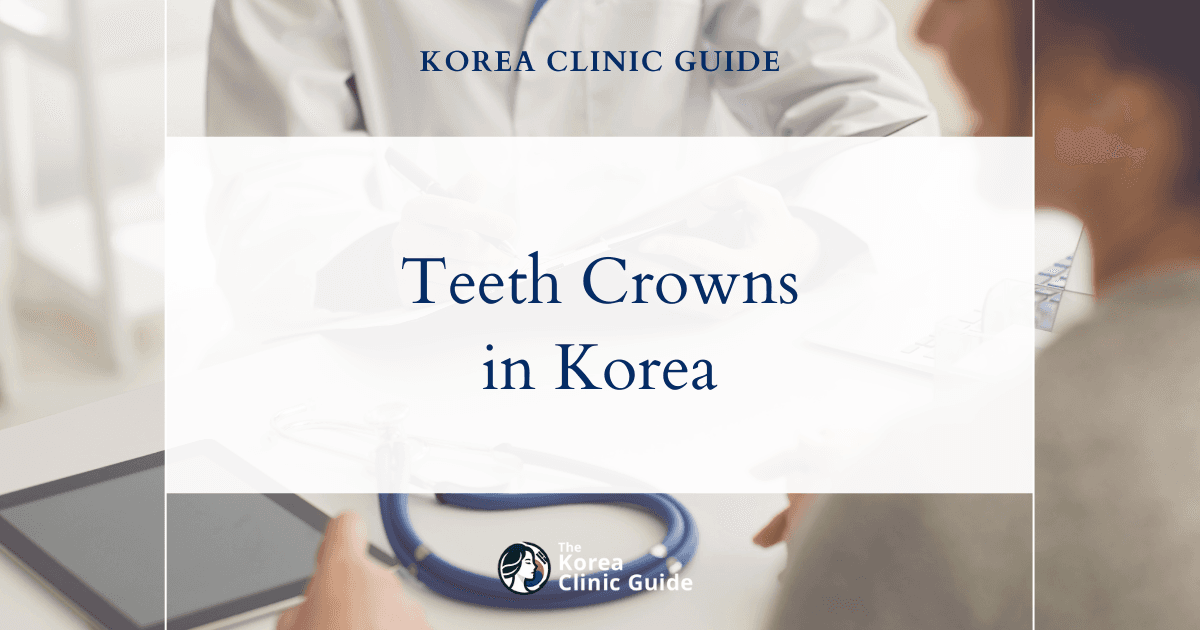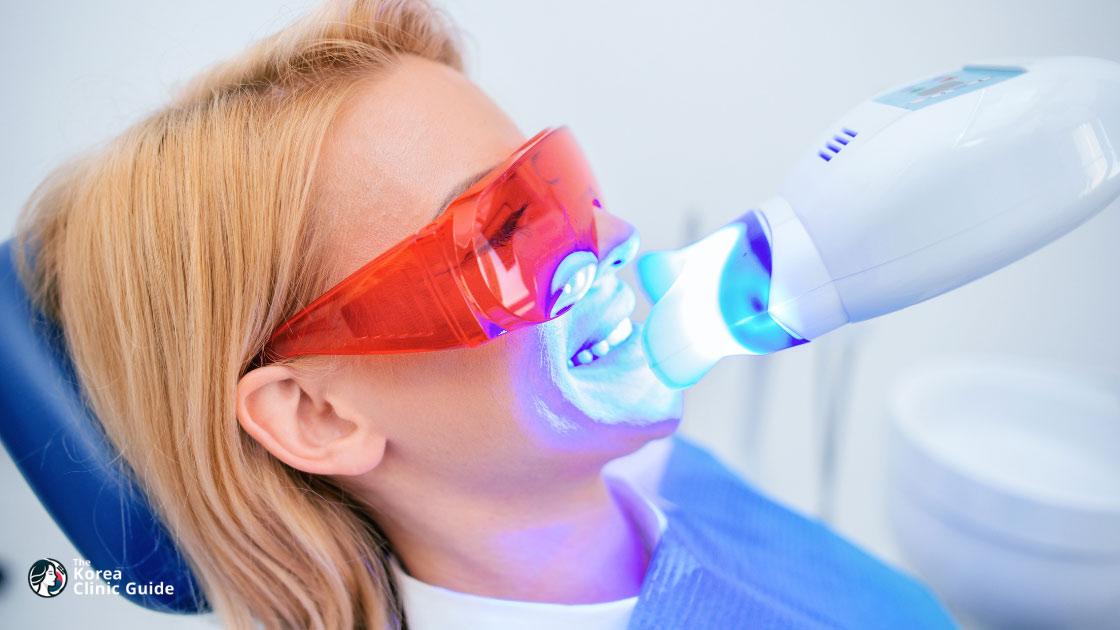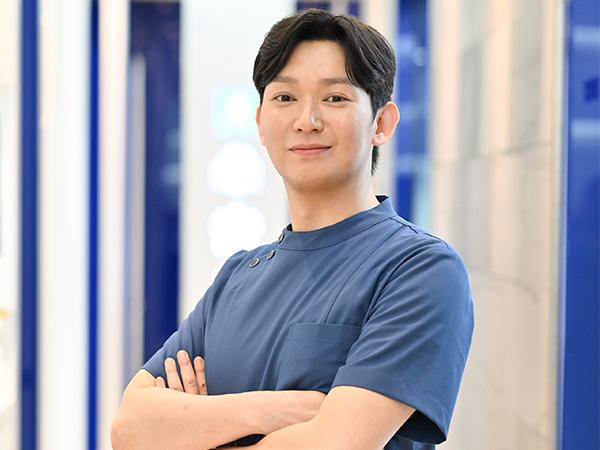Medical Tourism Blog
Resin Filling in Korea | Best Clinics, Costs, Procedure Types & More
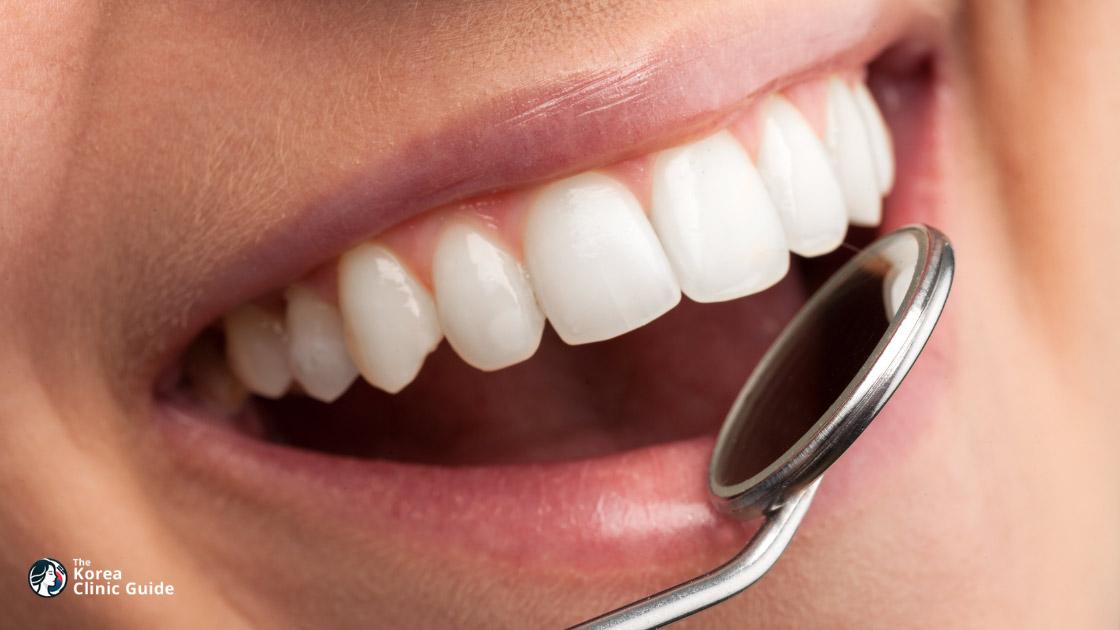
Table of contents
- What Is Resin Filling?
- Best Resin Filling Clinics in Korea
- Resin Filling in Korea
- Cost of Resin Filling in Korea
- Alternatives to Resin Filling
- Conclusion
Are you tired of metal fillings that stand out every time you smile? Discover why resin fillings are transforming smiles across Korea, combining aesthetic appeal with long-lasting functionality.
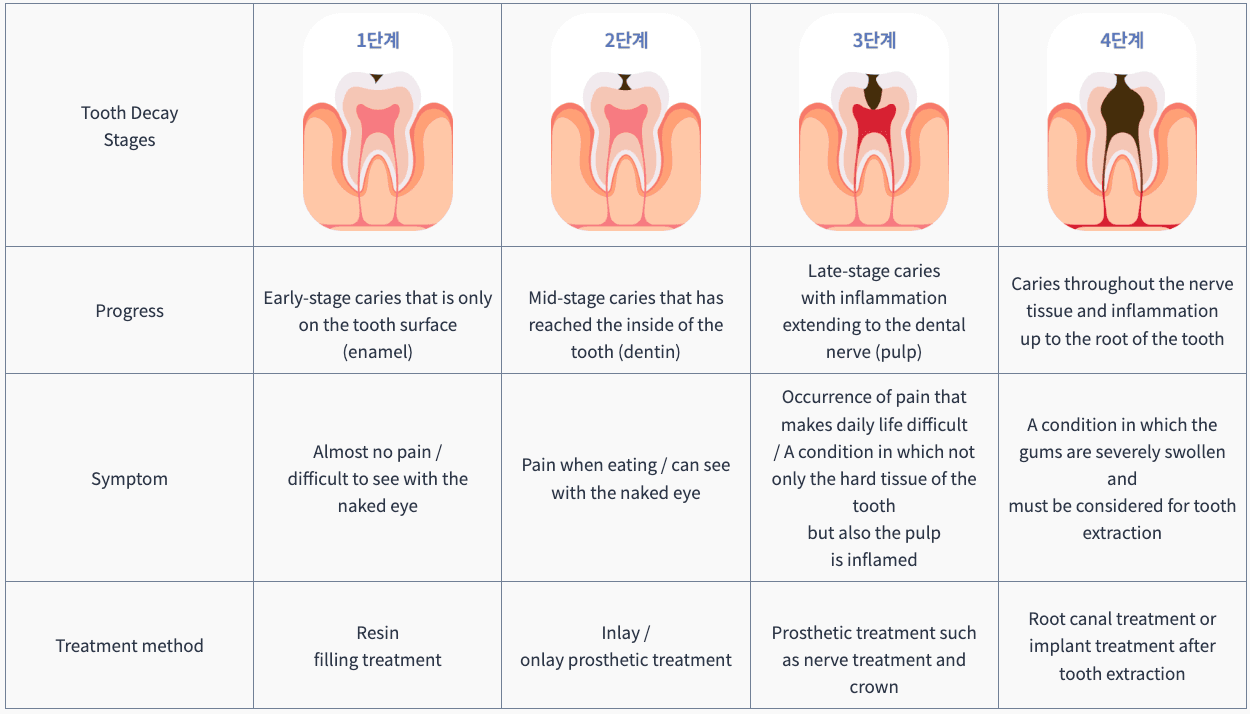
What Is Resin Filling?
Resin filling, also known as composite filling, is a dental procedure used to restore the function, integrity, and morphology of missing or damaged tooth structures. Unlike traditional amalgam fillings, resin fillings are made from a composite material that can be color-matched to the natural tooth, offering both functional and aesthetic benefits. This procedure has become increasingly popular in South Korea due to its durable and visually pleasing results.

Who Is It For?
Resin fillings are suitable for a wide range of patients. Here are the typical candidates:
- Individuals with Cavities: Resin fillings are commonly used to address cavities caused by tooth decay. The dentist removes the decayed portion and fills the cavity with the composite resin.
- People with Cracked or Chipped Teeth: Those who have suffered from minor to moderate tooth fractures or chips can benefit from resin fillings, which help restore the natural appearance and functionality of the damaged tooth.
- Patients Looking to Replace Old Fillings: Many opt to replace their old metal amalgam fillings with resin fillings for a more natural look.
- People with Minor Gaps between Teeth: Resin can also be used to close small gaps between teeth without the need for orthodontic treatment.
Types of Resin Fillings
Several types of resin fillings are available, each tailored to meet specific dental needs and preferences:
- Anterior Resin Fillings: These are used for front teeth where aesthetics are a primary concern. The composite material is carefully color-matched to blend seamlessly with the natural teeth.
- Posterior Resin Fillings: Applied to molars and premolars, these fillings are designed to withstand the greater chewing forces in the back of the mouth.
- Bulk-Fill Resins: These are newer materials that allow for quicker placement by enabling the dentist to fill a cavity in larger increments, thus reducing the overall procedure time.
- Flowable Resins: This type of resin has a lower viscosity, making it ideal for filling small cavities and fissures that are difficult to access with more viscous materials.
The Procedure
The resin filling procedure usually involves the following steps:
-
Consultation and Examination: The dentist will start with a thorough examination, often including X-rays, to determine the extent of decay or damage.
-
Anesthesia: Local anesthesia is administered to numb the area around the affected tooth, ensuring a comfortable experience for the patient.
-
Removal of Decay: The dentist will remove the decayed or damaged portions of the tooth using a dental drill or laser.
-
Etching: The tooth is then etched with a weak acid to create a slightly rough surface, improving the bonding strength of the resin.
-
Resin Application: The composite resin is applied in layers. Each layer is hardened using a special curing light before the next one is applied. This step is repeated until the cavity is fully filled.
-
Shaping and Polishing: Once the filling is complete, the dentist will shape the resin to match the natural contours of the tooth and polish it to achieve a smooth, natural-looking finish.
Advantages of Resin Fillings
- Aesthetics: Resin fillings blend seamlessly with natural teeth, making them an ideal choice for visible cavities.
- Strength and Durability: Modern composite resins are robust and durable, making them suitable for both anterior and posterior applications.
- Bonding: Resin adhesively bonds to the tooth structure, providing additional support to the remaining tooth.
- Less Tooth Removal: The procedure often requires less removal of the original tooth structure compared to traditional amalgam fillings.
Aftercare
Post-procedure care is vital to ensure the longevity of resin fillings. Patients are advised to:
- Avoid Hard Foods: Refrain from chewing on hard objects immediately after the procedure to prevent damage to the new filling.
- Maintain Oral Hygiene: Regular brushing and flossing help prevent new cavities from forming around the filling.
- Regular Dental Check-ups: Routine visits to the dentist will help monitor the condition of the filling and overall oral health.
Best Resin Filling Clinics in Korea
Listed below are the best clinics in Korea:
| Clinic Name | Key Features | Special Techniques |
|---|---|---|
| Gangnam Gentle Dental Clinic | Premier destination for dental care, English-speaking environment, flexible hours | 3D guided and Straumann implants, Botox for TMJ disorders |
| Minish Dental Hospital | Highly awarded, advanced dental treatments, personalized care | Minish Veneers, Molar Minish, Pink Minish |
| Yonsei Good Day Dental Clinic - Yangjae | Comprehensive dental care, natural tooth preservation | Microscope-assisted root canal therapy, enamel matrix derivative treatment |
Gangnam Gentle Dental Clinic
Gangnam Gentle Dental Clinic, situated in the vibrant district of Seocho-gu, Seoul, stands out as a premier destination for dental care, particularly for international patients. Under the leadership of Dr. Travis Kim, who brings his expertise from Ohio State University and St. Johnsbury Academy, the clinic offers a welcoming environment for English-speaking patients, alleviating concerns about language barriers. Dr. Kim's commitment to personalized care ensures that each patient receives treatment tailored to their specific needs, enhancing the overall dental experience. The clinic's strategic location and flexible hours, including weekends, make it an accessible choice for those seeking emergency dental care or routine treatments.
The clinic offers a comprehensive range of dental services, from cavity fillings and root canals to advanced cosmetic procedures like minimal shaving veneers and gum contouring. Their implant services, featuring 3D guided and Straumann implants, highlight their commitment to precision and quality. Additionally, the clinic provides specialized treatments such as Botox for TMJ disorders and emergency dental care, ensuring that all patient needs are met with expertise and care. With a strong focus on infection prevention and the use of advanced digital equipment, Gangnam Gentle Dental Clinic prioritizes patient safety and comfort, making it a trusted choice for dental care in the Gangnam area.
You can check out their website here: Gangnam Gentle Dental Clinic Website
Minish Dental Hospital
Minish Dental Hospital, located in the vibrant district of Gangnam, Seoul, is widely regarded as the premier clinic for resin-filling-korea in Korea, thanks to its unparalleled combination of advanced dental treatments and personalized patient care. As the most highly awarded dental clinic in Asia, Minish Dental Hospital has set a benchmark in the dental community with its innovative procedures, particularly the renowned Minish Veneers, which offer a minimally invasive solution for various dental issues. The clinic's impressive track record includes 113,118 cases and 84,504 hours of dedicated research and development, supported by a team of 102 top dentists and technicians. Minish Dental Hospital offers a comprehensive range of procedures, from Minish Veneers and Bridges to Molar Minish and Pink Minish, each designed to address specific dental concerns while preserving natural tooth structure and enhancing aesthetic appeal. The clinic's commitment to excellence is further demonstrated by its state-of-the-art equipment and a patient-centric approach led by esteemed specialists, including CEOs Dr. Jung Ho Kang. This dedication to honest, ethical, and personalized treatment plans has made Minish Dental Hospital the preferred choice for Korea's top celebrities and anyone seeking superior dental care, whether for routine maintenance or a complete smile transformation.
You can check out their website here: Minish Dental Hospital Website
Yonsei Good Day Dental Clinic - Yangjae
Yonsei Good Day Dental Clinic - Yangjae Branch stands out as the premier choice for resin-filling-korea in Korea due to its comprehensive approach to dental care and its commitment to preserving natural teeth. The clinic offers a wide range of specialized dental procedures, ensuring that each patient's unique dental health needs are met with precision and care. Their expertise in natural tooth preservation, including microscope-assisted root canal therapy and enamel matrix derivative treatment, highlights their dedication to maintaining the integrity of natural teeth. Additionally, the clinic's state-of-the-art facilities and skilled team provide a comfortable and reassuring environment for patients. This combination of advanced technology, specialized treatments, and a patient-centered approach makes Yonsei Good Day Dental Clinic - Yangjae the best choice for those seeking high-quality resin fillings and overall dental care in Korea.
Find more about this clinic here: Yonsei Good Day Dental Clinic - Yangjae Website
Resin Filling in Korea
Resin filling, also known as composite resin filling, is a common dental procedure in Korea designed to treat cavities or dental decay. This type of filling blends seamlessly with the natural color of your teeth, making it an attractive option for many patients. Here's a detailed explanation of what you can expect when undergoing a resin filling procedure in Korea.
Consultation
The first step is booking a consultation with a qualified dentist. In Korea, dental clinics are highly accessible in urban areas and employing advanced technology. During your consultation, the dentist will perform an oral examination, which may include X-rays to assess the extent of decay. This step helps in crafting a tailored treatment plan suitable for your dental needs.
Preparing for the Procedure
Once the treatment plan is established, an appointment for the resin filling procedure is scheduled. Unlike some other countries, Korean dental clinics are known for their punctuality and efficiency, so you can expect minimal waiting times. Before the procedure starts, the dentist will explain each step and answer any questions you may have, ensuring you are fully informed and comfortable.
Anesthesia
To minimize any discomfort, a local anesthetic is administered to numb the area around the affected tooth. Korean dentists are skilled in providing anesthesia with minimal discomfort, often employing advanced pain management techniques. The numbing process takes a few minutes to achieve full effect, ensuring you remain pain-free throughout the procedure.
Removing Decay
Once the anesthesia has taken effect, the dentist will use specialized instruments to remove the decayed portion of the tooth. This step is crucial for eliminating harmful bacteria and preparing the site for the resin filling. Korean dental clinics typically use advanced equipment, such as high-speed drills and lasers, to ensure precision and minimize the removal of healthy tooth material.
Applying the Resin
After the decay is removed, the dentist will clean the cavity to prepare it for the resin filling. The composite resin is then applied in layers, each of which is carefully shaped and hardened using a specialized curing light. This step-by-step layering process ensures optimal strength and aesthetics for the filling. One of the highlights of undergoing this procedure in Korea is the attention to detail; dentists meticulously adjust the resin to mimic the natural contours and color of your tooth.
Polishing and Final Adjustments
Once all layers of resin have been applied and hardened, the dentist will make any necessary final adjustments to ensure a perfect fit. The restored tooth is then polished to blend seamlessly with your natural teeth. Korean dental clinics often utilize high-quality polishing systems to achieve a smooth, glossy finish, enhancing both the durability and appearance of the filling.
Post-Procedure Care
After the procedure, the dentist will provide you with detailed aftercare instructions. This typically includes advice on maintaining oral hygiene, avoiding certain foods, and recognizing any signs of complications. In Korea, follow-up appointments are often scheduled to monitor the success of the filling and to make any needed adjustments.
Advanced Technology and Expertise
Korean dentists are well-regarded for their expertise and use of cutting-edge technology. Many clinics are equipped with the latest in dental imaging, digital X-rays, and high-quality materials, ensuring the highest standard of care. Additionally, the country’s commitment to continuous professional education means that practitioners are well-versed in the latest techniques and advancements in dental treatments.
Overall, getting a resin filling in Korea is a highly efficient, precise, and patient-focused experience. The combination of advanced technology, skilled practitioners, and meticulous attention to detail ensures that patients receive excellent care and optimal outcomes.
Cost of Resin Filling in Korea
| Procedure Price | Korean Won (₩) | USD ($) |
|---|---|---|
| Low Price | ₩70,000 | $0 |
| High Price | ₩250,000 | $200 |
Exchange rate as of 2025-04-16: 1 KRW = 0.0007 USD
Please note that these prices are approximate guidelines and can vary significantly based on the clinic and your individual circumstances.
Resin fillings, also known as composite fillings, are a popular choice for dental restorations in Korea due to their natural appearance and durability. The cost of resin fillings in Korea can be quite reasonable compared to many other countries, making it an attractive option for both locals and medical tourists.
Resin Filling Costs
The cost of a single resin filling in Korea generally ranges from ₩70,000 to ₩150,000 (approximately $60 to $130 USD) depending on the complexity of the procedure and the dental clinic's location. Specialized or high-end clinics in major cities like Seoul may charge slightly more, while clinics in smaller towns might offer more competitive pricing.
Travel Expenses
Flight Costs: The cost of flying to Korea will vary based on your departure location, the time of year, and the airline. For example, a round-trip flight from the United States to Korea can range from $700 to $1,500 USD depending on these factors. Booking in advance and being flexible with travel dates can help reduce the cost.
Accommodation: Accommodation in Korea ranges widely in price. Budget options like guesthouses and hostels can cost around ₩20,000 to ₩50,000 per night (approximately $17 to $42 USD), while mid-range hotels may range from ₩70,000 to ₩150,000 per night (approximately $60 to $130 USD). Luxury hotels will naturally cost more, often exceeding ₩200,000 per night ($170 USD).
Local Transportation: Public transportation in Korea is efficient and affordable. A single subway or bus ride within Seoul costs around ₩1,250 to ₩1,350 (approximately $1.10 USD). Taxis are also reasonably priced, with starting fares around ₩3,800 ($3.20 USD) and additional charges based on distance.
Food and Other Expenses: Food costs can vary widely depending on your preferences. Street food is affordable, with many delicious options available for just a few dollars. Dining at mid-range restaurants typically costs around ₩10,000 to ₩20,000 per meal (approximately $8 to $17 USD). High-end dining will be more expensive.
In summary, while the cost of resin fillings in Korea is relatively affordable, additional travel and accommodation expenses should be factored into your budget if you are considering traveling for dental treatment.
Alternatives to Resin Filling
If you're considering alternatives to resin fillings, several options can effectively restore your teeth while accommodating different needs and preferences:
1. Amalgam Fillings
Amalgam, often referred to as silver fillings, has been a staple in dental practices for many years. Here’s an overview of its distinct features:
- Durability: Amalgam fillings are known for their robustness and longevity, often lasting 15 years or more. They can withstand the pressure of chewing, making them ideal for molars.
- Cost-Effective: These fillings are typically less expensive than other materials.
- Insensitive to Moisture: The installation process is straightforward because the dentist doesn't need to keep the tooth dry.
- Appearance: One drawback is that they don’t blend with the natural color of the teeth.
- Safety: Despite containing mercury, the American Dental Association considers amalgam a viable and safe option, with studies indicating insufficient evidence of adverse effects.
2. Gold Fillings
Gold fillings, known for their durability and biocompatibility, are another noteworthy alternative:
- Longevity: Gold fillings can last over 20 years, significantly outlasting other types of fillings.
- Biocompatibility: Gold is well-tolerated by body tissues and rarely causes reactions or allergies.
- Installation: These typically require two visits as the gold inlay or onlay is custom-made in a laboratory.
- Cost: Gold fillings are one of the most expensive options. However, their longevity often justifies the higher initial cost.
- Aesthetics: They are not tooth-colored, which may be a consideration for some patients looking for a more natural appearance.
3. Ceramic Fillings
Ceramic (or porcelain) fillings offer a combination of durability and aesthetics:
- Natural Appearance: Ceramic fillings can be color-matched to your natural tooth color, providing an aesthetically pleasing option.
- Durability: These fillings are also quite durable, with a lifespan of up to 15 years.
- Stain Resistance: Porcelain is resistant to staining, maintaining its appearance over many years.
- Procedure: Similar to gold fillings, ceramic fillings often require at least two visits because the inlay or onlay needs to be fabricated in a dental lab.
- Cost: They tend to be more expensive than composite resin and amalgam fillings due to the material cost and the complex fitting process.
4. Glass Ionomer Fillings
Glass ionomer fillings present an option that blends aesthetic benefits with some unique functional properties:
- Appearance: These fillings are tooth-colored and can be shaded to blend pretty well with natural teeth.
- Fluoride Release: They release fluoride over time, which can help prevent further decay.
- Suitability: Glass ionomer is often used in parts of the tooth that aren’t under heavy chewing pressure due to its relatively lower durability compared to amalgam or composite resin.
- Durability: They tend not to last as long as other materials and might not be the best choice for large cavities.
Each of these alternatives comes with its pros and cons, making it crucial to discuss with your dentist which option aligns best with your dental health needs and aesthetic preferences.
Conclusion
In conclusion, resin fillings in Korea represent a significant advancement in dental care, combining cutting-edge technology with the expertise of highly trained dental professionals. These fillings not only mimic the natural appearance of teeth but also offer a durable and less invasive solution to dental decay and damage. As the popularity of cosmetic dentistry continues to grow, Korea stands out as a premier destination for patients seeking high-quality, aesthetically pleasing, and long-lasting dental treatments. With continuous innovations and stringent adherence to international standards, resin fillings in Korea ensure both the health and beauty of your smile are in expert hands.





